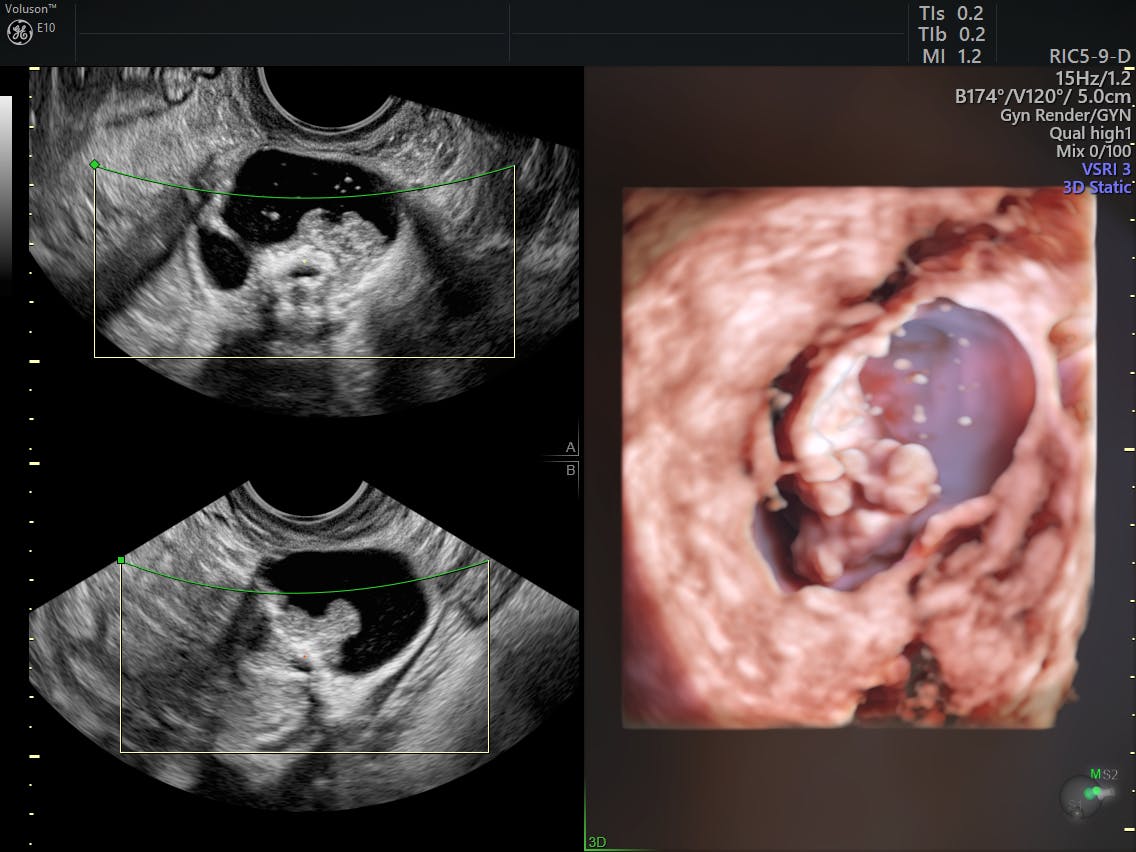Ovarian Cancer Pelvic Ultrasound Images

Ultrasound scans use high frequency sound waves to create a picture of a part of the body.
Ovarian cancer pelvic ultrasound images. Tvus transvaginal ultrasound is a test that uses sound waves to look at the uterus fallopian tubes and ovaries by putting an ultrasound wand into the vagina. Computed tomography ct scans use x rays to create. By the time the changes of ovarian cancer are detectable by ultrasound most ovarian cancers are well beyond the early stage of the disease. Uses sound waves to produce pictures of the structures and organs in the pelvis and can help identify ovarian or uterine cancers.
In transvaginal ultrasound a probe is inserted into the vagina for a better view of the uterus and ovaries. Transvaginal ultrasound or tvus usually prescribed for screening and detecting ovarian cancer uses sound waves for looking inside the uterus ovaries and fallopian tubes. The lowest sensitivity and highest specificity for diagnosis was found with ultrasound. The process of tvus uses an ultrasound wand into the vagina in order to find any mass or lump in the ovary or uterus though not all the masses found would essentially be tumor.
A transvaginal ultrasound involves inserting an ultrasound probe slightly larger than a tampon into the vagina to obtain images of the ovaries. Ultrasound involves moving a hand held transducer over the abdomen to create images of the ovaries. Pelvic transvaginal ultrasound this scan is used to create a clearer picture of your reproductive organs including your uterus ovaries fallopian tubes and cervix. You will be asked to undress from the waist down and to lie down on an examination couch with your knees bent.
It can show the ovaries womb and surrounding structures. A good ultrasound image can identify a mass and determine if it s a tumor solid or a cyst fluid filled. Ultrasound scan you might have an external ultrasound of your lower tummy pelvis or a vaginal ultrasound to help diagnose ovarian cancer. In cases of ovarian cancer ultrasound usually reveals complex cysts on one or both ovaries multiple solid masses nodule on the bowel or excess pelvic and or abdominal fluid.
But these scans can t determine whether the abnormality is cancer. 10 17 19 a large multicenter trial comparing ultrasound computed tomography ct and magnetic resonance imaging mri in the diagnosis and staging of ovarian cancer showed little difference between these modalities. It can even see inside the ovaries.

